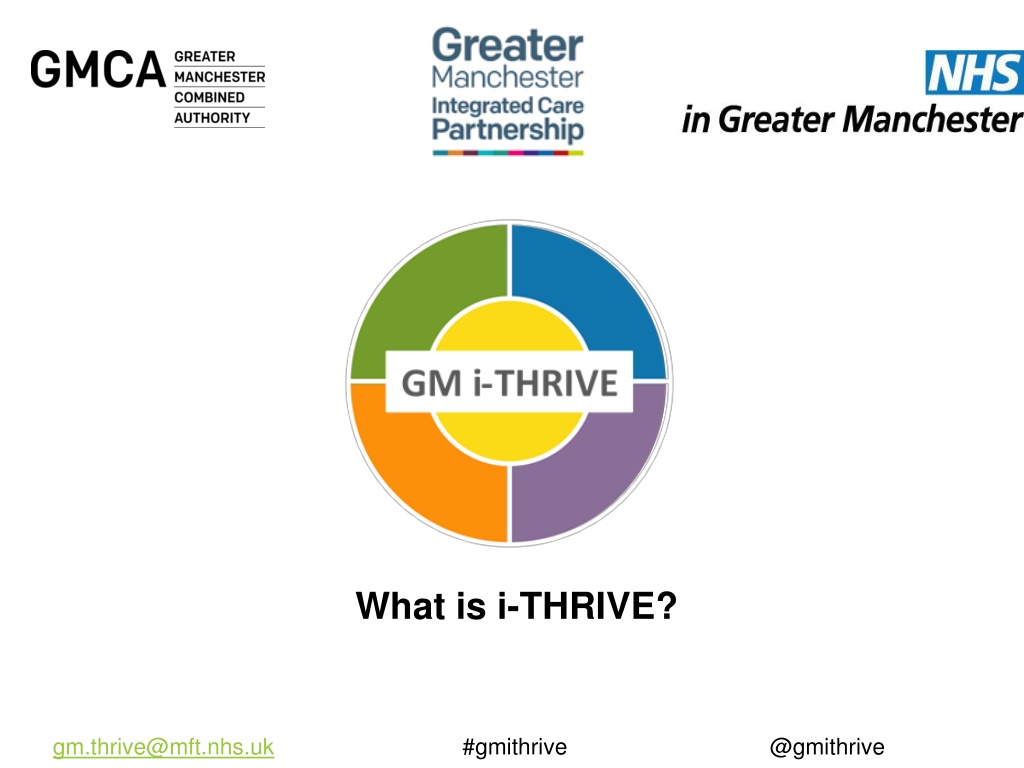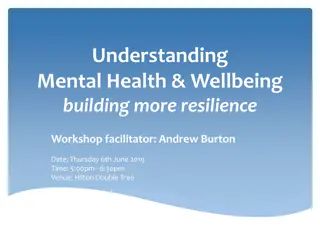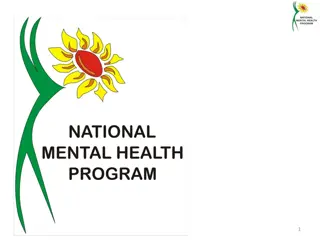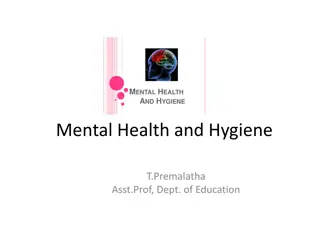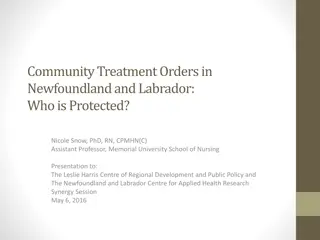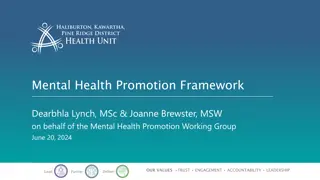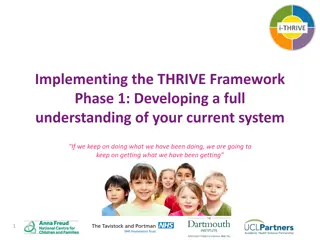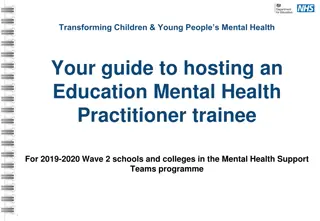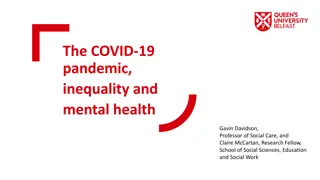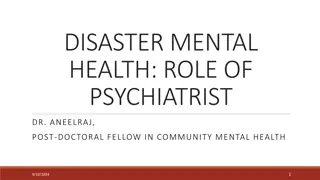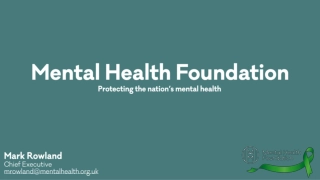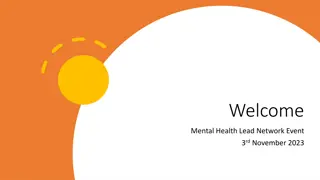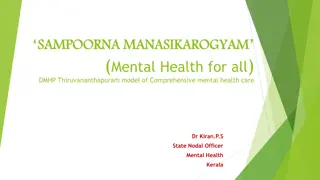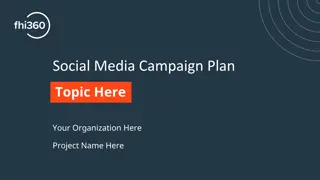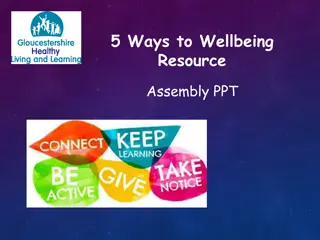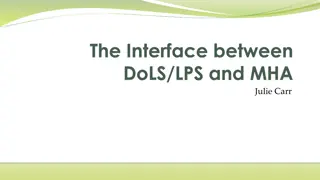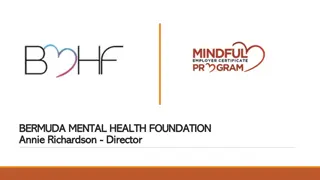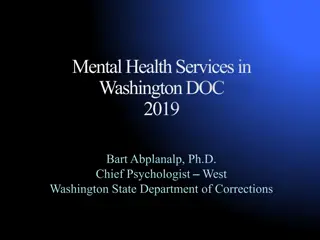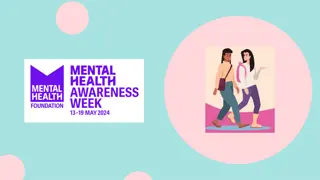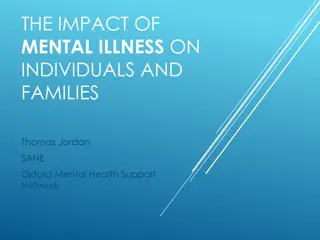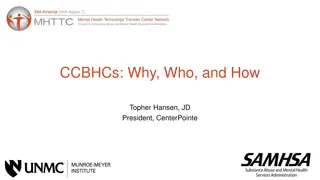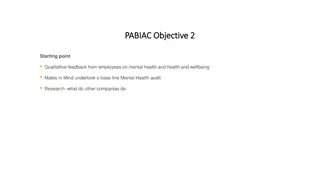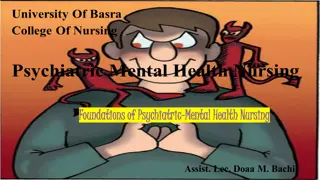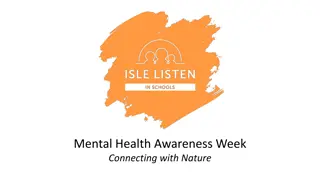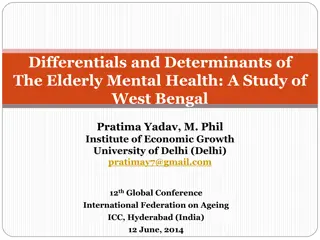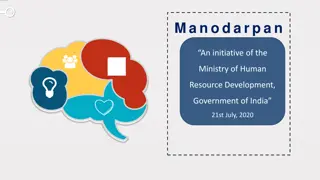Understanding the i-THRIVE Framework for Children's Mental Health
i-THRIVE is a comprehensive approach to implementing the THRIVE framework, focusing on delivering mental health services for children and young people. The Greater Manchester i-THRIVE program aims to promote thriving and improve outcomes in children's mental health. The THRIVE Framework emphasizes a needs-led, person-centered approach in delivering mental health services, focusing on creating coherent and efficient communities of support for children, young people, and families.
Download Presentation

Please find below an Image/Link to download the presentation.
The content on the website is provided AS IS for your information and personal use only. It may not be sold, licensed, or shared on other websites without obtaining consent from the author. Download presentation by click this link. If you encounter any issues during the download, it is possible that the publisher has removed the file from their server.
E N D
Presentation Transcript
What is i-THRIVE? gm.thrive@mft.nhs.uk #gmithrive @gmithrive
What is i-THRIVE? These slides aim to answer key questions about i-THRIVE. Let s start by clarifying the terms we use: What is THRIVE? THRIVE refers to the framework for delivering children s mental health What is i-THRIVE? i-THRIVE refers to the implementation of THRIVE. It is the mechanism to deliver a population/whole-system approach to promote thriving , and seeks to improve outcomes and deliver better value for money in relation to children and young people s mental health and wellbeing. What is GM i-THRIVE? GM i-THRIVE refers to Greater Manchester i-THRIVE. Meaning the programme working to implement the THRIVE framework and it s principles across Greater Manchester.
What is THRIVE? The THRIVE Framework for system change (Wolpert et al., 2019) is an integrated, person centred and needs led approach to delivering mental health services for children, young people and their families that was developed by a collaboration of authors from the Anna Freud National Centre for Children and Families and the Tavistock and Portman NHS Foundation Trust. Watch the animation explaining THRIVE https://www.youtube.com/watch?v=ARAaiEoVpjQ
The THRIVE Framework for system change The THRIVE Framework provides a set of principles for creating coherent and resource- efficient communities of mental health and wellbeing support for children, young people and families. It aims to talk about mental health and mental health support in a common language that everyone understands. The Framework is needs-led. This means that mental health needs are defined by children, young people and professionals through shared decision making. Needs are not based on severity, diagnosis or health care pathways. families alongside Download the here
The THRIVE Framework The THRIVE Framework reconsiders the current multi-agency system supporting Children and Young People s psychological and emotional wellbeing In contrast to the current tiered model of healthcare, THRIVE emphasises cross agency and system-wide factors as key to ensuring that young people thrive, and that good quality care for psychological and emotional well-being is provided to CYP across all sectors. The THRIVE Framework encompasses service values and principles that enable self help/management, access to advice and signposting, early intervention, and getting help and more help without a prolonged journey of escalation through different services.
The THRIVE Model Attempts at drawing a clearer distinction between: Treatment and support and Self-management and intervention
What does the THRIVE Framework mean to young people? No wrong door , meaning anyone they went to see for advice, whether they were a teacher, a GP or the school lunchtime assistant, would be able to provide support or to signpost a child. Whoever is offering them help would know the best ways to ask for their views about what was important to them and what they wanted to be different, so that there is genuine shared decision making about ways of helping. There will be a particular emphasis on looking at different things the young person, their family and friends could do to help including accessing community groups and resources, from drama/arts, to sport, to volunteering. 9
What does the THRIVE Framework mean to young people? Continued Whoever is providing targeted specific help to address the mental health difficulties would support the young person to evaluate progress and to check that what was being tried was helping. There will be supportive but transparent conversations about what different treatments were likely to lead to, including the limitations of treatment and the possibilities of needing to put in place management of ongoing difficulties as relevant. 10
7min briefing 7min briefing Needs Led Groups: Thriving THRIVING 7m briefing Around 80% of children at any one time are experiencing the normal ups and downs of life but do not need individualised advice or support around their mental health issues. They are considered to be in the Thriving group. They may however benefit from prevention and promotion and communities implementing the THRIVE Framework should consider how best to support such initiatives at a system level. Within localities: Everyone has a role in promoting mental wellbeing and proactively preventing mental health issues. How emotionally friendly are our environments? Our services? Do we actively promote mental wellbeing? Do we know how to promote it? Are we reducing stigma? Are we aware of what can impact on our mental health and wellbeing?
7min briefing 7min briefing Needs Led Groups: Getting Advice This group includes both those with mild or temporary difficulties AND those with fluctuating or ongoing severe difficulties, who are managing their own health and not wanting goals-based specialist input. Information is shared such that it empowers young people and families to find the best ways of supporting their mental health and wellbeing. Within localities: We all have a role in giving general advice about mental health and mental wellbeing and a role in signposting our c&yp and their families even if it is to a single point of contact for mental health support. As a system we need to be aware of what is on offer in our locality and how people can access it. What websites are good? What apps are good? What arts and culture based offers are out there? What do our children and young people want? What is our single point of contact? What is our digital offer?
7min briefing 7min briefing Needs Led Groups: Getting Help & Getting More Help This group comprises those who need specific interventions focused on agreed mental health outcomes. An intervention is any form of help related to a mental health need in which a paid-for professional takes responsibility for input directly with a specified individual or group. The professional may not necessarily be a trained mental health provider, but may be a range of people who can provide targeted, outcomes-focused help to address the specific mental health issue. This is not conceptually different from Getting Help. It is a separate needs-based grouping only because need for extensive resource allocation for a small number of individuals may require particular attention and coordination from those providing services across the locality. It is for each community to determine the resource allocation threshold that defines Getting More Help from Getting Help.
7min briefing 7min briefing Needs Led Groups: Getting Help & Getting More Help Within localities: Consider which services provide evidence based interventions? Are the services delivered to young people in these needs based groupings compliant with NICE guidelines? Are they delivered by people trained in that intervention and do they receive appropriate supervision? Mapping of services delivering evidence based interventions Ending treatment training
7min briefing Needs Led Groups: Getting Risk Support 7min briefing The aim of specifying a category of Getting Risk Support is for all partners to be clear that what is being provided is managing risk ONLY. It is important to note that there are likely to be risk management aspects in all groupings. However, in the context of high concerns but lack of therapeutic progress for those in this group, risk management is the sole focus. Children or young people in this grouping may have some or many of the difficulties outlined in Getting Help or Getting More Help above BUT, despite extensive input, they or their family are currently unable to make use of help, more help or advice AND they remain a risk to self or others. They may have engaged in getting help or more help but haven t improved or got worse or they are unable to make use of that type of help. Within localities: Shared agreement between Social Care and CAMHS about who these C&YP are and how the risk is going to be shared. Which methodology are we going to use? i.e. AMBIT
What is Greater Manchester i-THRIVE? GM i-THRIVE is a programme working with locality leads to implement the THRIVE framework and it s principles across all 10 Greater Manchester localities. Working with the GM workforce, children, young people and families, and all other stakeholders, we are aiming to improve mental health support and provision across GM, and have the whole system working in a thrive-like way The programme team is made up of : o Clinical Lead o Programme Manager o Project Coordinator o Training Coordinator o Assistant Psychologist
Whats going on Greater Manchester i-THRIVE? Community of Practice The community of practice is a network of key stakeholders involved in the implementation of thrive across Greater Manchester. Ranging from commissioners, to volunteers, to young people those within the network share learning, discuss common issues, and innovations for working in a thrive-like way. Community of Practice events are held twice a year where we get together for networking and to share key learning and methods for how thrive is being implemented across the system. The Community of Practice receive updates on all things thrive. Members receive the GM i-THRIVE newsletter, invites to thrive events, and shared learning on thrive-like practice. Become a member here: http://eepurl.com/dGd1bX
GM i-THRIVE Academy Core training modules The GM i-THRIVE Academy modules are currently being redeveloped, we are aiming to deliver the following modules Developing a shared understanding Getting Advice and Signposting When to end treatment Getting Risk Support AMBIT AMBIT Be sure to sign up to our community of practice to be alerted when new training is launched
Ways to engage with THRIVE- Get in touch Vist our GM website: http://implementingthrive.org/greater-manchester- i-thrive/ Sign up to the GM Community of Practice: http://eepurl.com/dGd1bX Contact the team: gm.thrive@mft.nhs.uk Follow us on twitter @gmithrive
Ways to engage with THRIVE- Our resources Visit the GM website: http://implementingthrive.org/greater-manchester-i- thrive/ or National i-THRIVE Website http://implementingthrive.org/ Look at our i-THRIVE case studies from all across GM Learn the basics with the Intro to THRIVE elearning Join in via our community of practice Read the THRIVE FAQs Watch our presentation on Implementing the THRIVE Framework across a whole system Contact the team: gm.thrive@mft.nhs.uk
